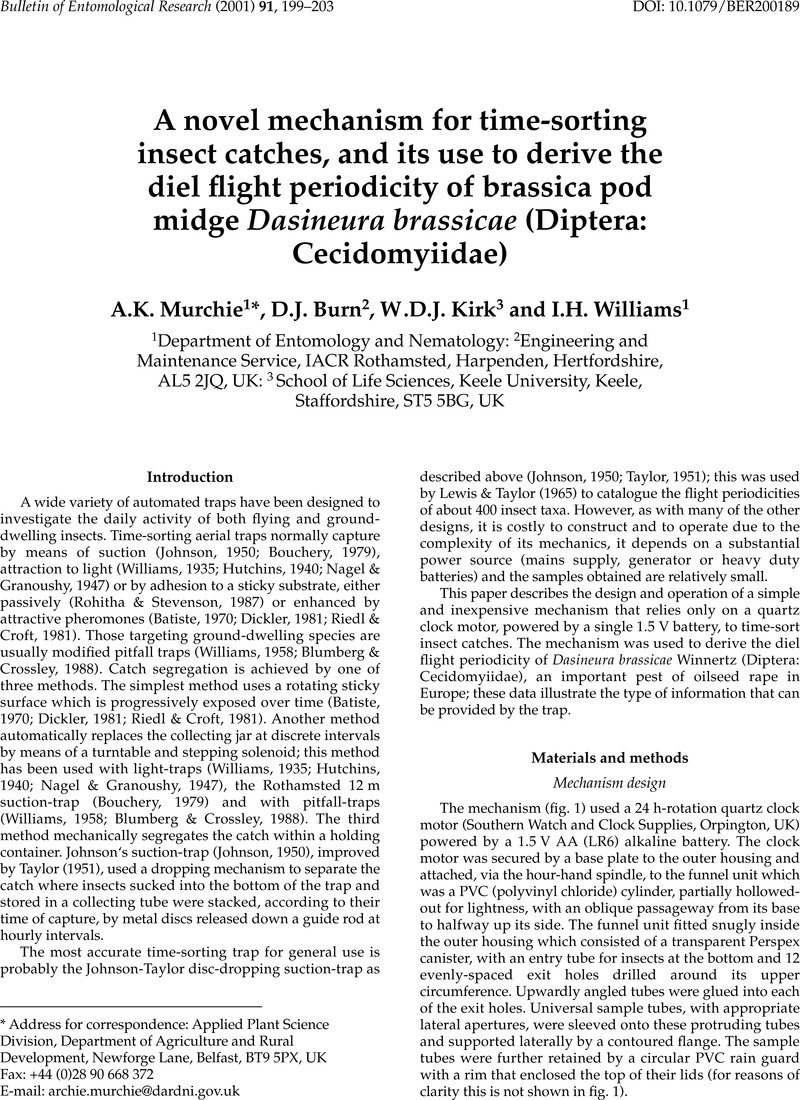Crossref Citations
This article has been cited by the following publications. This list is generated based on data provided by Crossref.
Williams, Ingrid H.
Büchi, Rudolf
and
Ulber, Bernd
2003.
Biocontrol of Oilseed Rape Pests.
p.
145.
Murchie, Archie K.
and
Hume, Kevin D.
2003.
Evidence for monogeny in the brassica pod midge Dasineura brassicae.
Entomologia Experimentalis et Applicata,
Vol. 107,
Issue. 3,
p.
237.
Stevenson, Douglass E.
and
Harris, Marvin K.
2009.
Determining Circadian Response of Adult MaleAcrobasis nuxvorella(Lepidoptera: Pyralidae) to Synthetic Sex Attractant Pheromone Through Time-Segregated Trapping With a New Clockwork Timing Trap.
Environmental Entomology,
Vol. 38,
Issue. 6,
p.
1690.
Potamitis, Ilyas
Eliopoulos, Panagiotis
and
Rigakis, Iraklis
2017.
Automated Remote Insect Surveillance at a Global Scale and the Internet of Things.
Robotics,
Vol. 6,
Issue. 3,
p.
19.
Hausmann, Johannes
2021.
Challenges for integrated pest management of Dasineura brassicae in oilseed rape.
Arthropod-Plant Interactions,
Vol. 15,
Issue. 5,
p.
645.
Skvarla, Michael J
Larson, Jonathan L
Fisher, J Ray
Dowling, Ashley P G
and
Reddy, Gadi V P
2021.
A Review of Terrestrial and Canopy Malaise Traps.
Annals of the Entomological Society of America,
Vol. 114,
Issue. 1,
p.
27.
Sunderland, Keith D.
Powell, Wilf
Symondson, William O. C.
Leather, Simon R.
Perlman, Steve J.
and
Abram, Paul K.
2023.
Jervis's Insects as Natural Enemies: Practical Perspectives.
p.
415.





